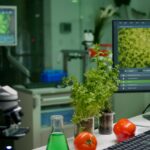Napier Grass: A Sustainable Source for Biomass-Based Electricity Generation
As the world looks for cleaner, renewable sources of energy, biomass-based electricity generation is becoming increasingly important. Among various biomass options, Napier Grass (Pennisetum purpureum), also known as elephant grass, stands out for its high yield, rapid growth, and energy efficiency.
In this blog, we’ll explore how Napier Grass is used to generate electricity, from cultivation to power production, and its growing role in sustainable energy systems.
Why Napier Grass?
Napier Grass is a perennial tropical grass known for its remarkable biomass productivity — up to 40–60 tons per hectare per year under optimal conditions. Originally grown for cattle fodder, it’s now being recognized as an excellent energy crop due to:
High cellulose and hemicellulose content (good for combustion/gasification)
Fast regrowth after cutting (can be harvested 3–4 times a year)
Low input requirements (requires less water and fertilizer than many food crops)
Carbon sequestration capacity
Non-edible (avoids food vs. fuel conflict)
Electricity Production Process Using Napier Grass
The process typically involves the harvest, drying, preprocessing, and thermal conversion of Napier Grass to generate electricity. Below is a step-by-step breakdown:
1. Cultivation and Harvesting
Variety Selection: High-yielding cultivars like CO-3, CO-4, or Pakchong-1 are selected.
Land Preparation: Well-drained loamy soils are ideal. Slurry, compost, or organic manure is applied before planting.
Planting: Propagation is done through stem cuttings in rows with spacing of about 60 cm × 60 cm.
Irrigation and Fertilization: Regular watering is done, especially in dry seasons. Nitrogen-based fertilizers enhance growth.
Harvest Cycle: First harvest in 60–90 days; subsequent harvests every 45–60 days.
2. Drying and Preprocessing
Freshly harvested grass contains 70–75% moisture.
Sun drying or mechanical drying is used to reduce moisture to below 15% for combustion or gasification.
The dried grass is chopped or pelletized for uniform feeding into the energy conversion systems.
3. Energy Conversion Technologies
Napier Grass can be used in multiple ways for electricity production:
A. Direct Combustion
Grass is burned in biomass boilers to produce steam.
The steam drives a steam turbine connected to a generator.
Common in co-fired plants, often mixed with other biomass or coal.
B. Gasification
Grass is heated at high temperatures (700–1,000°C) in limited oxygen to produce syngas (carbon monoxide, hydrogen, methane).
The syngas is filtered and combusted in an internal combustion engine or gas turbine to generate electricity.
More efficient and cleaner than direct combustion.
C. Anaerobic Digestion (optional method)
If used as silage, Napier Grass can be fermented to produce biogas (methane + CO₂).
Biogas is purified and used to run gas engines for power.
Lower energy yield per ton compared to gasification, but a viable rural model.
Example of Energy Output
1 ton of dry Napier Grass yields approx. 14–16 GJ (Gigajoules) of energy.
This can produce around 400–450 kWh of electricity, depending on the technology used.
A 1 MW biomass plant using Napier Grass would require around 25–30 tons of dry biomass per day.
Environmental Benefits
Carbon Neutral: CO₂ released during combustion is offset by that absorbed during growth.
Waste Utilization: Ash from combustion can be used as fertilizer.
Reduces Stubble Burning: Napier can be cultivated as an alternative to crop residues.
No food-fuel conflict: As a non-food crop, it does not compete with food resources.
Applications & Case Studies
India: Napier is being promoted in states like Maharashtra and Tamil Nadu for rural electrification and biogas plants.
Africa: Trials in Kenya and Uganda for off-grid electricity generation in farming communities.
Thailand: Used in co-firing plants along with bagasse and rice husk.
Challenges to Address
Moisture Management: Drying grass in humid climates remains a hurdle.
Logistics: Bulky raw material requires efficient transport and storage systems.
Technological Investment: Gasifiers and boilers have high initial costs.
Policy Support: Requires government incentives and feed-in tariffs to scale up.
Conclusion
Napier Grass offers a sustainable, renewable, and scalable option for electricity generation, especially in tropical and subtropical regions. As governments and industries shift towards greener energy sources, biomass power plants based on Napier Grass can play a crucial role in reducing dependence on fossil fuels and promoting rural development.
By integrating scientific cultivation practices with modern bioenergy technologies, Napier Grass is no longer just cattle fodder — it’s a future fuel.







